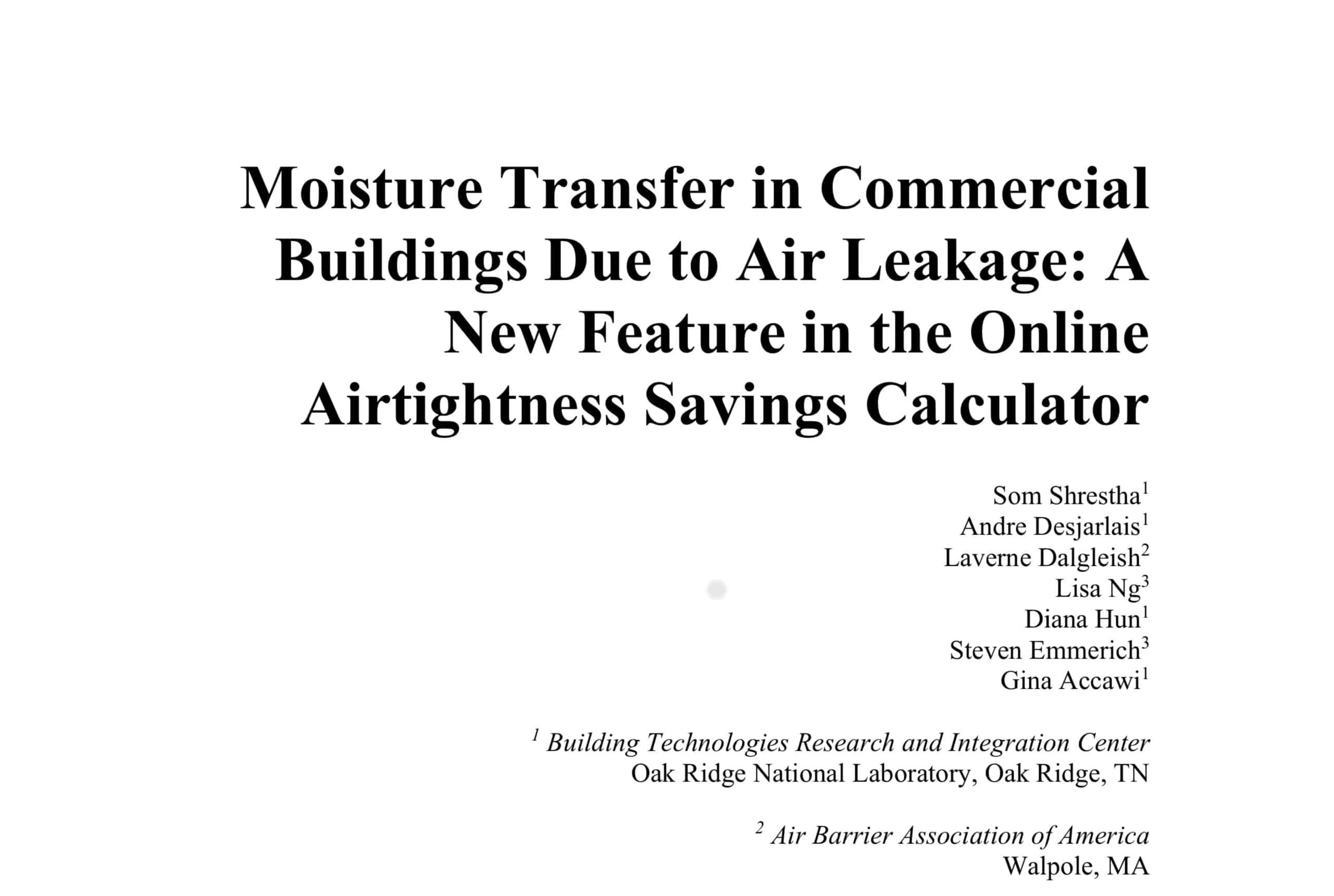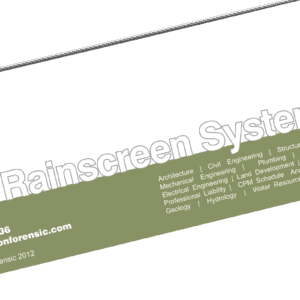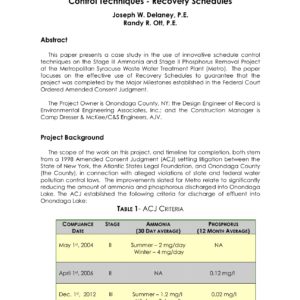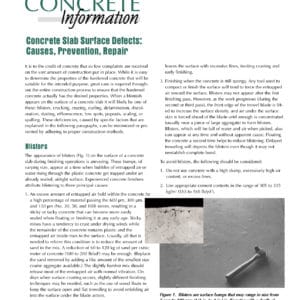Moisture Transfer in Commercial Buildings Due to Air Leakage
Love this item?
Download For Free
Subscribe to download this item, and get 14 days of unlimited downloads - for free!
Start 14-Day Free Trial

Contributor - Files
Full Description
Air leakage through the building envelopes is responsible for a large amount of energy use. The
US Department of Energy Windows and Building Envelope Research and Development Roadmap for
Emerging Technologies states that, in 2010, air infiltration was responsible for 20% of primary energy
consumption attributable to the fenestration and building envelopes of commercial buildings. Despite this
fact, improving airtightness is not always recognized by commercial building owners, as they have been
slow in acknowledging and diminishing the detrimental effects of air leakage on energy use, comfort,
indoor air quality, and building material durability.
The design and construction industry would benefit from a credible, easy-to-use tool that estimates
potential energy and financial savings in a standardized manner so designers and contractors can give
building owners compelling reasons to invest in reducing air leakage. In 2016–2017, Oak Ridge National
Laboratory, the National Institute of Standards and Technology, the Air Barrier Association of America,
and the US-China Clean Energy Research Center for Building Energy Efficiency collaborated to develop
an online calculator. This user-friendly calculator is free to the public and uses the simulation results of
the whole building energy simulation tool EnergyPlus and the airflow simulation tool CONTAM. In 2018–
2019, the calculator was expanded to add moisture transfer calculations given that air leakage through the
building envelope can have a significant impact on moisture transfer and associated impacts. Four more
commercial building types were also added to the existing database of three building types as part of this
update. This paper describes the procedure used to calculate moisture transfer due to air leakage and
provides examples that demonstrate the moisture transfer for each of the seven commercial building types
that are currently part of the calculator.





Reviews
There are no reviews yet